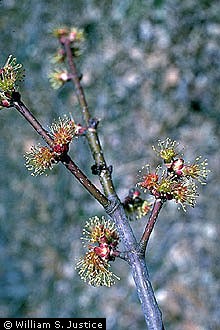Helping the World One Organism at a Time
 Acer
saccharinum is a necessary organism in our environment because
of all the different organisms that rely on it for survival. These trees often have a hollow trunk creating great
homes for squirrels, raccoons, birds, and many other animals. Also,
they are a very
important source of nutrition for many mammals and birds. These
nutrients are mostly
found in the fruits, buds, and twigs of the tree.
Acer
saccharinum is a necessary organism in our environment because
of all the different organisms that rely on it for survival. These trees often have a hollow trunk creating great
homes for squirrels, raccoons, birds, and many other animals. Also,
they are a very
important source of nutrition for many mammals and birds. These
nutrients are mostly
found in the fruits, buds, and twigs of the tree.
There are few parasites known to infect Acer saccharinum,
but recently a fungus was found in Nevada.
In 1999, a bleeding canker disease was found on multiple trees.
With the use of morphological and genetic research, it
was found to be fungi called Phytophthora cactorum
and its close relative Phytophthora citricola. This invasion causes
death in both mature and young trees.
 We, as humans,
also use this plant. Because of its rapid growth, many towns and
cities formerly used the silver maple as street
and shade trees. This quickly fell out of favor because the
shallow, vast, aggressive root system destroyed sewer pipes and
cables that were nearby. Another problem is that even though
Acer saccharinum is a very hard wood, it is also very brittle. This characteristic causes
the tree to fall and create damage even in relatively small wind
storms. People currently use the wood for flooring, crate building, railroad
ties, and cheaper furniture. Syrup can also be harvested from Acer saccharinum, but few do so because its close relative,
Acer saccharum, produces much more.
We, as humans,
also use this plant. Because of its rapid growth, many towns and
cities formerly used the silver maple as street
and shade trees. This quickly fell out of favor because the
shallow, vast, aggressive root system destroyed sewer pipes and
cables that were nearby. Another problem is that even though
Acer saccharinum is a very hard wood, it is also very brittle. This characteristic causes
the tree to fall and create damage even in relatively small wind
storms. People currently use the wood for flooring, crate building, railroad
ties, and cheaper furniture. Syrup can also be harvested from Acer saccharinum, but few do so because its close relative,
Acer saccharum, produces much more.
Continue on to learn about the different
adaptations.